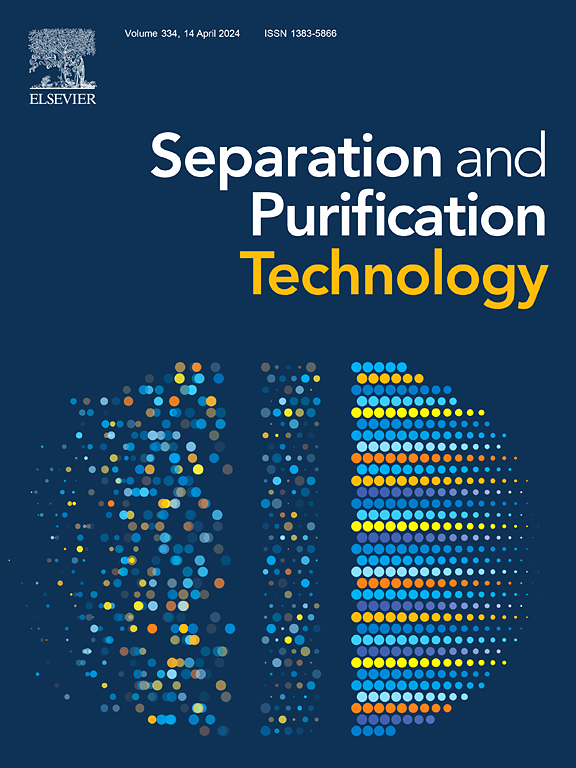Thiazine dye sorption onto (NH4)2S2O8 treated bio-adsorbent: Implications for batch and fixed-bed column applications
IF 8.1
1区 工程技术
Q1 ENGINEERING, CHEMICAL
引用次数: 0
Abstract
In an era of increasing environmental concern, this study pioneers the synthesis of Ap@BC, a carbonized material produced from biochar derived from waste biomass and activated with (NH4)2S2O8. Sodium alginate was utilized to prepare adsorbent beads from this material, which were investigated for their remarkable potential as an efficient adsorbent for MB dye, employing both batch and fixed-bed column systems. Various characterization techniques, including TGA, FTIR, Raman spectroscopy, and SEM, provided valuable insights into the surface properties of Ap@BC, significantly enhancing its dye-binding capabilities. Kinetic analyses revealed that MB removal adheres to the Pseudo-second-order kinetic model, indicative of a chemisorption mechanism, while adsorption equilibrium data exhibited a robust correlation with the Freundlich isotherm model, highlighting the heterogeneous adsorption characteristics of Ap@BC. The monolayer adsorption capacity of 52.6 mg/g, as determined by the Langmuir isotherm model. The fixed-bed column experiment showed that the efficiency of the column enhanced significantly with increased bed depth and reduced flow rates, emphasizing the operational advantages of Ap@BC in real-world applications. The robust fit of the kinetic data with Thomas and Yoon Nelson models highlights its feasibility for large-scale deployment. Furthermore, potential mechanisms of MB adsorption encompassing n-π interaction, hydrogen bonding, and electrostatic interactions illustrate the multifaceted approach of Ap@BC in addressing dye pollution. Altogether, these findings position Ap@BC as a promising and effective adsorbent in wastewater purification and environmental remediation.求助全文
约1分钟内获得全文
求助全文
来源期刊

Separation and Purification Technology
工程技术-工程:化工
CiteScore
14.00
自引率
12.80%
发文量
2347
审稿时长
43 days
期刊介绍:
Separation and Purification Technology is a premier journal committed to sharing innovative methods for separation and purification in chemical and environmental engineering, encompassing both homogeneous solutions and heterogeneous mixtures. Our scope includes the separation and/or purification of liquids, vapors, and gases, as well as carbon capture and separation techniques. However, it's important to note that methods solely intended for analytical purposes are not within the scope of the journal. Additionally, disciplines such as soil science, polymer science, and metallurgy fall outside the purview of Separation and Purification Technology. Join us in advancing the field of separation and purification methods for sustainable solutions in chemical and environmental engineering.
 求助内容:
求助内容: 应助结果提醒方式:
应助结果提醒方式:


